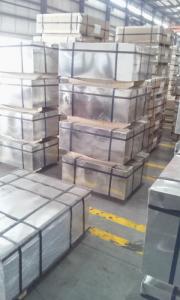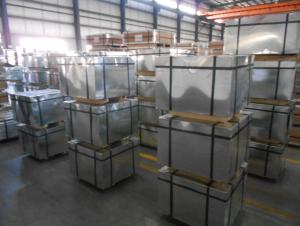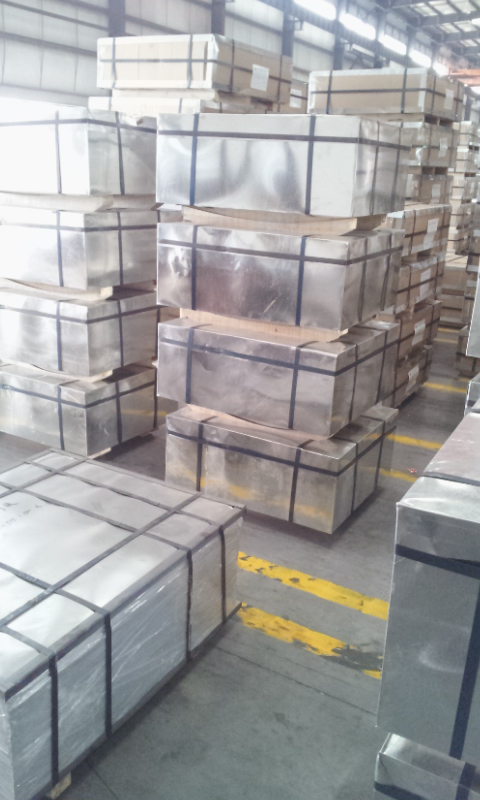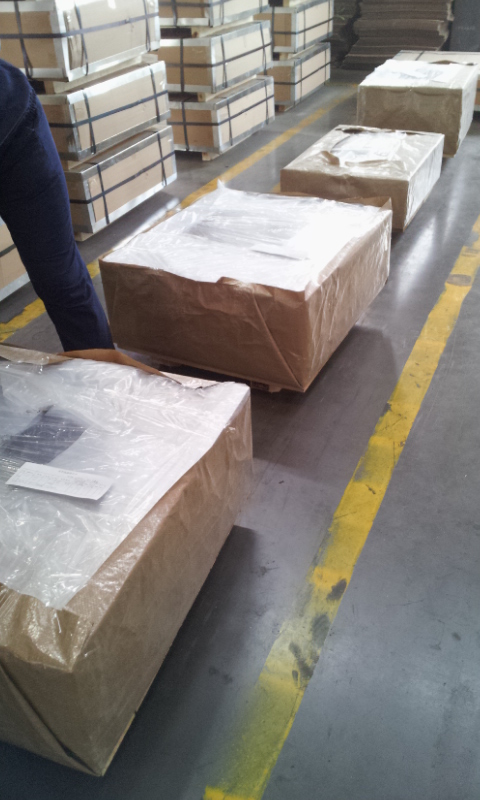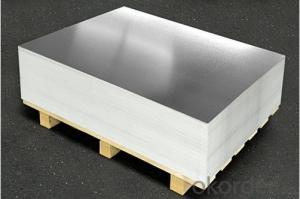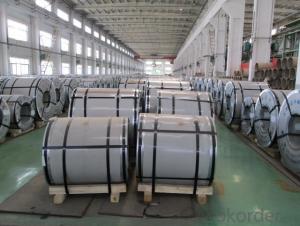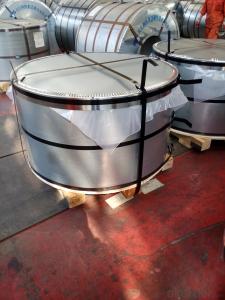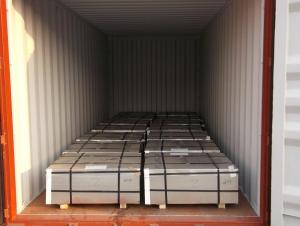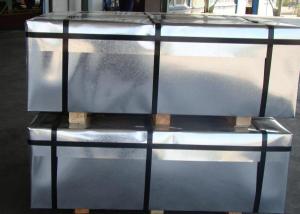Electrolytic Tinplate Sheet
- Loading Port:
- China Main Port
- Payment Terms:
- TT OR LC
- Min Order Qty:
- -
- Supply Capability:
- -
OKorder Service Pledge
Quality Product, Order Online Tracking, Timely Delivery
OKorder Financial Service
Credit Rating, Credit Services, Credit Purchasing
You Might Also Like
Please kindly refer to Specifications:
Standard | JIS G3003,BS EN 10202 |
| Material | MR, SPCC |
Thickness | 0.15-0.50mm |
| Width | 600-1050mm |
| Temper | T1-T5; DR8 |
| Coating | Both Equal and Differential Available |
Surface finish | Bright, Stone, Silver, Matt |
| Oiling | DOS |
| Coil ID | 508 mm |
| Coil weight | 3-10 MT |
| Sheet weight | 1-1.5 MT |
| Weight in one 20’ container | 20-25 MT |
| Packaging | For coils: Anti-rust paper +metal cover +corner protected +wood skid For sheets: Thin plastic film +rust-proof paper +metal cover +metal angles + straps + pallet. Loaded in 20 feet container with max weight 25 tons |
| Application | Metal Container and Mechanical Parts |
- Q: What are the environmental impacts of producing tinplate?
- The production of tinplate has several environmental impacts. The extraction and processing of tin ore can result in habitat destruction, deforestation, and soil erosion. The smelting process emits greenhouse gases, contributing to climate change. Additionally, the use of chemicals during production can contaminate water sources and harm aquatic life. Proper waste management and adopting more sustainable practices can help mitigate these impacts.
- Q: What are the main applications of tinplate in the photography industry?
- Tinplate is commonly used in the photography industry for producing photographic plates, which are used in traditional film cameras. These plates are coated with a light-sensitive emulsion and exposed to light to capture images. Additionally, tinplate is used for making tin cans to store and protect photographic film and other sensitive materials, ensuring their longevity and preservation.
- Q: How does tinplate compare to tin-free steel in terms of properties and applications?
- Tinplate and tin-free steel have distinct properties and applications. Tinplate, which is steel coated with a thin layer of tin, offers excellent corrosion resistance, formability, and solderability. It is commonly used in the food and beverage industry for making cans, containers, and closures due to its ability to preserve the product's quality and prevent contamination. On the other hand, tin-free steel, also known as electrolytic chromium-coated steel, provides superior paint adhesion, scratch resistance, and weldability. It finds applications in manufacturing various products like aerosol cans, automotive parts, and appliances that require durability and aesthetic appeal. Ultimately, the choice between tinplate and tin-free steel depends on the specific requirements of the application at hand.
- Q: What are the common sizes and shapes of tinplate products?
- Common sizes and shapes of tinplate products vary depending on their purpose and industry. However, some commonly seen sizes include cans ranging from small containers for food and beverages (such as soda cans) to larger ones for bulk products (such as paint cans). Tinplate products also come in various shapes, including rectangular, cylindrical, and irregular forms, to cater to different packaging needs and maximize storage efficiency.
- Q: What are the advantages of tin packaging?
- Shapes: tinplate cans can be made into various shapes according to different needs, such as cans, cans, cans, circular elliptical horseshoe and trapezoid etc, can satisfy the different needs of product packaging, and the packaging container more change, promote sales.
- Q: What are the main factors affecting tinplate market growth?
- The main factors affecting tinplate market growth include the demand for packaged food and beverages, expanding industrial applications, economic growth and urbanization, government regulations and policies, technological advancements, and changes in consumer preferences and behavior.
- Q: How to prevent the corrosion of tinplate wall hydrogen sulfide blackening, expansion
- Cathodic protectionProtective screen corrosion protection. The principle of protecting the screen is to make the metal of the anode corrode and protect the cathode metal material from corrosion. A metal or alloy (shielding material) connected to the surface of a metal tank and pipeline to be protected shall be protected from corrosion due to the low potential in the primary cell and corrosion of the screen material used as an anode. This method is applicable to the preservation of oil storage tanks, oil tankers and underground oil pipelines. Screen materials are commonly used, including series, aluminum, town and alloy.Cathodic protection of impressed current. Impressed current cathodic protection method is to protect the metal pipelines and oil storage tanks and electrical excavation of the negative link, as a cathode and protected; the power supply of the positive steel scrap corrosion. The method is applicable to underground oil storage tanks, underground pipelines and terminals, pipelines and tankers directly connected with the sea. Generally used anode materials are scrap iron and steel, graphite, high silicon iron, magnetic iron oxide, etc., these materials are consumed, can be replaced at any time.
- Q: What are the main challenges in tinplate labeling?
- The main challenges in tinplate labeling include ensuring proper adhesion of labels to the smooth and sometimes oily surface of tinplate, maintaining label integrity during the packaging and transportation process, and finding solutions to prevent label damage due to moisture, heat, or other environmental factors. Additionally, accurately positioning and aligning labels on curved or irregularly shaped tinplate surfaces poses a significant challenge.
- Q: How does tinplate compare to other packaging materials?
- Tinplate offers several advantages compared to other packaging materials. It is highly durable, providing excellent protection for the packaged goods. Tinplate is also resistant to corrosion, ensuring the longevity of the packaging. It is lightweight, making it cost-effective for transportation and storage. Additionally, tinplate is versatile, allowing for various shapes and sizes of packaging, and it provides an attractive appearance, enhancing the visual appeal of the product. Overall, tinplate is a reliable and efficient packaging material that offers numerous benefits in comparison to other alternatives.
- Q: What are the main differences between tinplate and tinplate laminates in terms of shelf life?
- Tinplate has a longer shelf life compared to tinplate laminates. Tinplate is made of a single layer of tin coating on steel, providing excellent corrosion resistance and protection against oxygen and moisture. Tinplate laminates, on the other hand, consist of multiple layers, with a thin layer of tin on top of a substrate material such as plastic or paper. While laminates can offer additional features like flexibility and printability, they may have a shorter shelf life due to the potential for delamination or degradation of the substrate material.
Send your message to us
Electrolytic Tinplate Sheet
- Loading Port:
- China Main Port
- Payment Terms:
- TT OR LC
- Min Order Qty:
- -
- Supply Capability:
- -
OKorder Service Pledge
Quality Product, Order Online Tracking, Timely Delivery
OKorder Financial Service
Credit Rating, Credit Services, Credit Purchasing
Similar products
Hot products
Hot Searches
Related keywords
